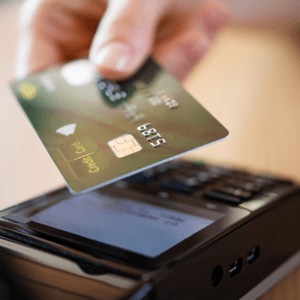Understanding Payment Gateways
Grasping the role of payment gateways is like understanding the traffic cops of online transactions. They direct the flow between merchants and banks, ensuring everything runs smoothly.
Every transaction is a dance, starting with a customer’s click. The payment gateway steps in, encrypts data, and hands it off to a processor. Here, the transaction is authorized, either getting the green light or hitting a roadblock at the bank’s door. It’s a well-oiled machine, ensuring efficiency and security.
Meanwhile, businesses eye mobile trends and private cloud providers for added security. These clouds offer a snugger fit for businesses prioritizing data protection. Imagine having a tech partner such as Liberation Tek Pay Harmony program that simplifies these choices, making your payment processing journey as smooth as possible.
Our Secure Payment Processing Partner
How Payment Processors Work
Viewing how payment processors operate is like watching a skilled conductor leading an orchestra. They manage the intricate dance of transaction data between customers, merchants, and banks. Imagine the processor as the stage manager, ensuring every cue is on point for a seamless performance. They handle authorization, settlement, and fund transfers, making sure transactions hit the right notes.
When a customer initiates a payment, the processor steps in, coordinating between credit card networks and banks. It’s like a relay race, with each baton pass crucial for success. The processor ensures funds move swiftly from customer to merchant, while keeping data secure.
Think of security as the fortress guarding this process. Encryption and tokenization shield sensitive information from prying eyes. It’s a fortified castle, safeguarding the transaction flow. With security measures, businesses can focus on their core operations, knowing their transactions are in safe hands.

Steps in a Payment Transaction
Understanding the journey of a payment can be as exciting as unraveling a mystery. Here’s how it usually unfolds. It all starts when the customer initiates the transaction, like handing over a baton in a relay race. The payment gateway encrypts the data, ensuring it’s as secure as a secret code. Next, the payment processor steps in, sending an authorization request to the bank. This is where the magic happens, with the bank either approving or denying the request.
Imagine the bank as a cautious gatekeeper, scrutinizing every detail before giving the green light. If everything checks out, the funds transfer occurs, and the merchant receives payment. This process is like a well-oiled machine, ensuring efficiency and security.
In the realm of payment processing, having robust security measures is akin to having a fortress around your finances. With encryption and other safeguards in place, transactions remain secure, letting businesses focus on growth without worries.
Role of Credit Card Networks
Peering into the intricate dance of credit card networks reveals a fascinating world. They orchestrate the interaction between acquiring and issuing banks, setting rules for payment processing. These networks ensure transactions flow like a well-rehearsed symphony, maintaining harmony in the digital marketplace.
When you swipe your card, the network’s magic begins. It swiftly connects banks, communicating in digital whispers, ensuring everything aligns perfectly. This seamless connection ensures the transaction’s integrity, resembling a tightrope walker balancing with precision.
Visa and MasterCard are the maestros here, setting the stage with guidelines that maintain consistency and security. They ensure each transaction follows a familiar rhythm, providing both merchants and consumers with peace of mind.
In this dynamic environment, the role of credit card networks is a cornerstone. Their invisible yet crucial presence guarantees every transaction is a safe, reliable journey from start to finish. Without them, the payment processing ecosystem would be a chaotic jumble. Isn’t it fascinating how such an integral part of our financial lives often goes unnoticed?

Authorization and Authentication Process
The process of verifying identity and fund availability is the heartbeat of Pay Harmony payment processing. Imagine a bouncer at a club, ensuring everyone is legit before letting them in. This step catches potential fraudsters trying to crash the party. With swipes and clicks, this gatekeeping ensures each transaction is genuine.
Consider the merchant as a host, eager to welcome guests who’ve passed this crucial checkpoint. The dance between authorization and authentication becomes a well-choreographed routine, each step ensuring the safety and integrity of the transaction.
In this digital age, trust is the currency. Ensuring a smooth, secure payment experience is like nailing the perfect email marketing campaign—delightful for both sides.
In this complex dance, payment processing relies on this foundational step to maintain security and trust. A streamlined process solidifies relationships, keeping everyone happy and connected in this digital transaction journey.
When explaining merchant accounts, one should think of them as the heart of payment processing. These accounts are crucial for businesses to accept credit card payments and effectively manage transactions. Unlike regular bank accounts, merchant accounts are specifically designed for processing payments.
Now, here’s the kicker: they don’t hold funds for long. Instead, they act as a gateway, swiftly transferring money from a customer’s payment to the business’s bank account. This is akin to a relay race in the financial world, ensuring money moves quickly and securely.
Here’s a fun tidbit, some businesses might even find their merchant accounts bundled with additional services such as fraud protection. This makes the whole package feel like a Swiss army knife for payment processing. And while merchant accounts might not be as thrilling as the latest email marketing software, they’re indispensable for keeping the financial wheels turning smoothly in any business.
Security Measures in Payment Processing
Implementing robust security in payment processing is paramount for user trust and data protection. Encryption stands as a fortress, safeguarding sensitive details during transactions. Imagine it as a digital lock, keeping prying eyes at bay.
Tokenization adds another layer, swapping real card data for unique identifiers. This twist ensures even if intercepted, data remains meaningless. Who knew random numbers could be so mighty?
Meanwhile, SSL protocols weave an encrypted tunnel between users and servers, ensuring safe passage for data. It’s like sending information in an armored car, shields up!
Regular security audits and updates are crucial. They act like routine check-ups, ensuring systems stay healthy against evolving cyber threats. Skipping them? That’s like ignoring a flat tire warning on a road trip.
Businesses must prioritize these strategies to maintain a secure environment. After all, safety isn’t just a feature—it’s the bedrock of a reliable payment system.
Addressing payment fraud involves strategic measures to safeguard transactions. Real-time monitoring acts as the vigilant guard at the gate, spotting suspicious activities before they escalate. Machine learning is another ally, learning from past patterns to predict and prevent fraudulent attempts. It’s like having a well-trained detective on your team.
But that’s not all. Robust verification processes ensure every transaction is genuine, akin to checking IDs at a club. Have you ever seen those bouncers who don’t miss a beat?
Implementing these strategies reduces the risk of fraud and saves money. No one wants to see hard-earned cash slip through the cracks. It’s crucial for businesses to stay one step head of fraudsters. After all, peace of mind is priceless when dealing with financial transactions.
In a world where fraudsters lurk, these methods shine as the heroes of payment processing, ensuring trust and security in every transaction.
Importance of PCI Compliance of payment processing
The significance of adhering to PCI standards in payment processing cannot be overstated. When businesses comply, they’re not just ticking a regulatory box; they’re safeguarding sensitive customer data, which is critical in preventing breaches. It’s like having a guard dog for your digital transactions, barking at potential threats.
Imagine a small shopkeeper who knows each customer by name. This level of trust is built over time, just as compliance builds customer confidence. When customers feel secure, they’re more likely to swipe, tap, or click without hesitation. Breaches, however, can lead to costly fines and dent reputations.
Moreover, complying with these standards ensures that businesses are up to date with the latest security protocols. It’s a safety net, ensuring that every transaction, big or small, is protected. Think of it as wearing a seatbelt—essential for a smooth journey in the fast lane of digital transactions.
The advantages of selecting a personal cloud service are akin to finding the perfect fit. For businesses dealing with sensitive payment processing, this choice can be a game-changer. A private cloud ensures that every transaction is not just processed efficiently but securely, acting like an impregnable fortress for data.
Think of it as having a personal bodyguard for your information. Control over every aspect means customizing security measures tailored to your needs. This is especially crucial for industries handling large volumes of financial data.
Customization allows tweaks to align with specific regulatory standards, making compliance a breeze. Imagine having a bespoke suit—perfectly tailored, fitting just right. That’s what a private cloud offers.
Plus, with dedicated resources, downtime is minimized, ensuring transactions are smooth and uninterrupted. It’s like having a chef in your kitchen, ready to whip up anything, anytime. With these benefits, it’s clear why many businesses prefer this tailored approach.
Mobile Payment Processing Trends
Trends in mobile payment processing are a bit like fashion—always changing and full of surprises. One minute it’s all about digital wallets, the next, it’s contactless payments. Remember when you first tapped your phone to pay at a store? Felt like magic, right?
The rise of integrated mobile commerce solutions is pushing boundaries. Businesses are focusing on creating seamless shopping experiences on your phone. Imagine ordering a coffee, paying, and collecting reward points—all with a single tap!
Security remains a top priority, with more sophisticated encryption technologies ensuring transactions are secure. Companies are embracing biometrics, like fingerprint and facial recognition, adding an extra layer of protection.
And let’s not forget the world of cryptocurrencies. They’re knocking on the door, ready to disrupt traditional methods. As businesses adapt to these changes, staying updated is key. Who knows? Maybe your smartphone will soon be your wallet, bank, and personal assistant, all in one.
Choosing the Right Payment Processor
Choosing the perfect fit for your business involves considering several factors beyond just cost. Look at payment processing transaction fees and consider whether they align with your budget. Security is a biggie, too; you want robust measures to keep your data safe. Speaking of security, ensure your processor complies with industry standards like PCI.
Customer support can make or break your experience. A processor offering 24/7 assistance can be a lifesaver when things go wrong. Don’t forget to check if the processor integrates well with your existing systems. You don’t want a tech headache on your hands!
Scalability can’t be overlooked. As your business grows, you need a processor that grows with you. And hey, let’s face it, user reviews can give you real-world insights. Finally, trust your gut—if a processor feels like a good match, it just might be the one!
Future of Payment Processing Technologies
As we gaze into the crystal ball of payment processing technologies, get ready for some thrilling rides. Blockchain is on the brink of shaking things up, offering unparalleled transparency and security. Imagine transactions zooming through with zero hiccups, thanks to artificial intelligence. This tech marvel could spot fraudulent activities quicker than a cat on a hot tin roof!
Biometric authentication, like fingerprint and facial recognition, is coming in hot, ensuring transactions are as secure as a vault. They’re making passwords look like relics from the Stone Age. Digital currencies are making their mark, too, poised to change how we think about money.
The potential leaps in data security promise to keep hackers at bay, making people sleep better at night. Who knows? In a few years, we might just say goodbye to cash altogether. So, buckle up for a future where paying is as smooth as silk!
The world of payment processing is quite like a bustling marketplace. Each player, from gateways to processors, plays a key role. Understanding this ecosystem helps businesses navigate transactions smoothly.
Staying updated with mobile trends and emerging technologies is like tuning into the latest hits. Change happens fast, and businesses must adapt. Choosing the right processor is like picking the perfect partner for a dance. They must match your rhythm and style.
Security measures and fraud prevention are the trusted guardians in this arena. They ensure your transactions are as safe as a vault. As technologies advance, businesses can look forward to more innovations. The future promises quicker, safer, and more user-friendly payment experiences.


